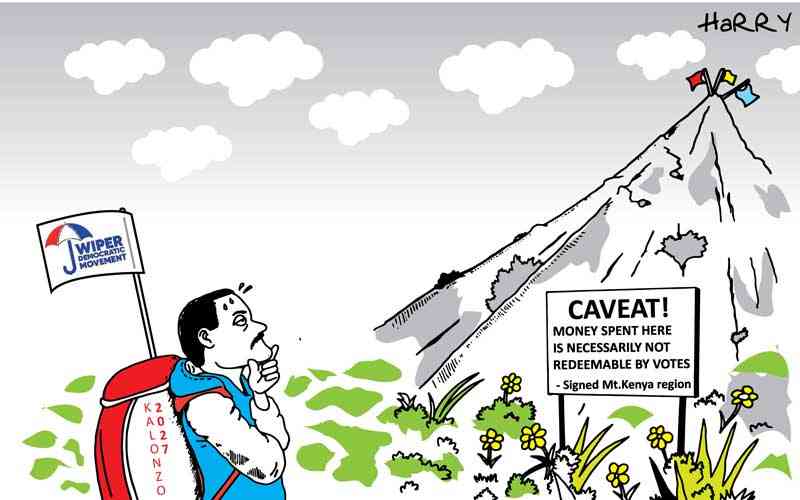By H. Kiprop rutto
Kenya has numerous sectoral legislations on the three environment media (Air, Water and Land) which has been the main reason for duplication, contradiction and overlap of decisions, making it complex to ensure a clean and healthy environment guaranteed by the 2010 Constitution under Article 42.
Perhaps ‘integration’ would be the best option to remedy the problem. I have taken time to study how the United Kingdom has managed to circumvent the problems caused by sectoral laws through integration by establishing one Environment Agency.
The Agency is a non–departmental public body that deals with flooding and pollution.
With regard to the three environment media, the Agency regulates the release of air pollutants into the atmosphere from large, complex industrial processes; it acts also as the main regulatory authority for all waste management activities including the licensing of sites such as landfill, incineration and recycling facilities and finally it maintains and improves the quality of rivers, lakes, sea and groundwater.
With issuance of Environment Permits, the Agency is guided by the Environmental Permitting Regulations (England and Wales) 2010, which covers a wide area of the environment and sometimes guided by numerous Environmental Directives enacted by European Union. The establishment of the Agency has seen a significant reduction of pollution transfer from one media to the other.
The question is can Kenya embrace the same system?
The constitutional provision that guarantees the right to clean and healthy environment under Article 42 and subsequently the enabling provision of Article 70 which gives any person powers to apply to Court for an order prohibiting environmental breach without necessarily proving to have suffered harm is a platform to establish a single integrated independent environment permitting body.
Floods in Budalang’i
This will be good news to the newly established Environment and Land court, saving the court from the agony of duplicated and overlapping nature of the current environment legislations.
Just like the England and Wales Environment Agency, the body I am proposing will cover two major areas in which have proved to be a headache for the Government, i.e. drought in the north eastern and coastal parts of Kenya and floods in Budalang’i area.
Kenyans have played a major role to elevate their fellow Kenyans from the state of hunger by generously contributing in the (Kenyans for Kenya) initiative. But I argue that someone has to take the ultimate responsibility of protecting Kenyans from environment-related deaths and disasters e.g. floods or hunger.
The body I propose will have legal personality, which means it can be sued for failure to discharge its responsibility. Government will have to set aside money for the functioning of the body mainly to ensure sufficient food in their reserves to feed the people during drought and also adequate equipment to fight flooding and drilling of water in the arid areas and other environment-related catastrophe like cleaning of coastal shores from oil pollution.
One thing we have to agree is that global warming is real and the drought witnessed in the Horn of Africa will persist for a long period of time before the Developed countries cut their CO2 emission levels(which is unlikely).
What we should be thinking as a nation is to combat the effects of global warming by mitigation and adaptation measures which includes reducing the impact of global warming by ensuring access to water and food in the most affected regions.
Stay informed. Subscribe to our newsletter
The recent agreement by COP 17 in Durban, South Africa, on climate change, to establish a ‘Green Climate Fund’ for developing countries will boost the body financially (assuming funding will be immediate) and the Kenya government will not have to cough a lot of money to fund the body.
The establishment of the body will see the abolishment of NEMA (together with the enabling law) which has failed to discharge its responsibility adequately. Instead the body will act as a supervisory body for ‘lead agencies’ (as defined under Article 2 of EMCA 1999) and also issue Environmental Impact Assessment (EIA) at county level.
Same language
It will see reduction of haphazard pollution on the rivers, air by industries and also manage waste generations. The enactment of the body will mean restructuring of several statutes to ‘speak the same language’ to avoid the repeat of duplication and inconsistency of sectoral laws.
I agree that establishing the body will entail several challenges, but the ultimate goal of conserving and protecting of our natural resources and minimising the impact of environment catastrophe will be good option for the present and future generations.
Writer is an environmental lawyer and founder of Green Hand Organization.
 The Standard Group Plc is a
multi-media organization with investments in media platforms spanning newspaper
print operations, television, radio broadcasting, digital and online services. The
Standard Group is recognized as a leading multi-media house in Kenya with a key
influence in matters of national and international interest.
The Standard Group Plc is a
multi-media organization with investments in media platforms spanning newspaper
print operations, television, radio broadcasting, digital and online services. The
Standard Group is recognized as a leading multi-media house in Kenya with a key
influence in matters of national and international interest.
 The Standard Group Plc is a
multi-media organization with investments in media platforms spanning newspaper
print operations, television, radio broadcasting, digital and online services. The
Standard Group is recognized as a leading multi-media house in Kenya with a key
influence in matters of national and international interest.
The Standard Group Plc is a
multi-media organization with investments in media platforms spanning newspaper
print operations, television, radio broadcasting, digital and online services. The
Standard Group is recognized as a leading multi-media house in Kenya with a key
influence in matters of national and international interest.








